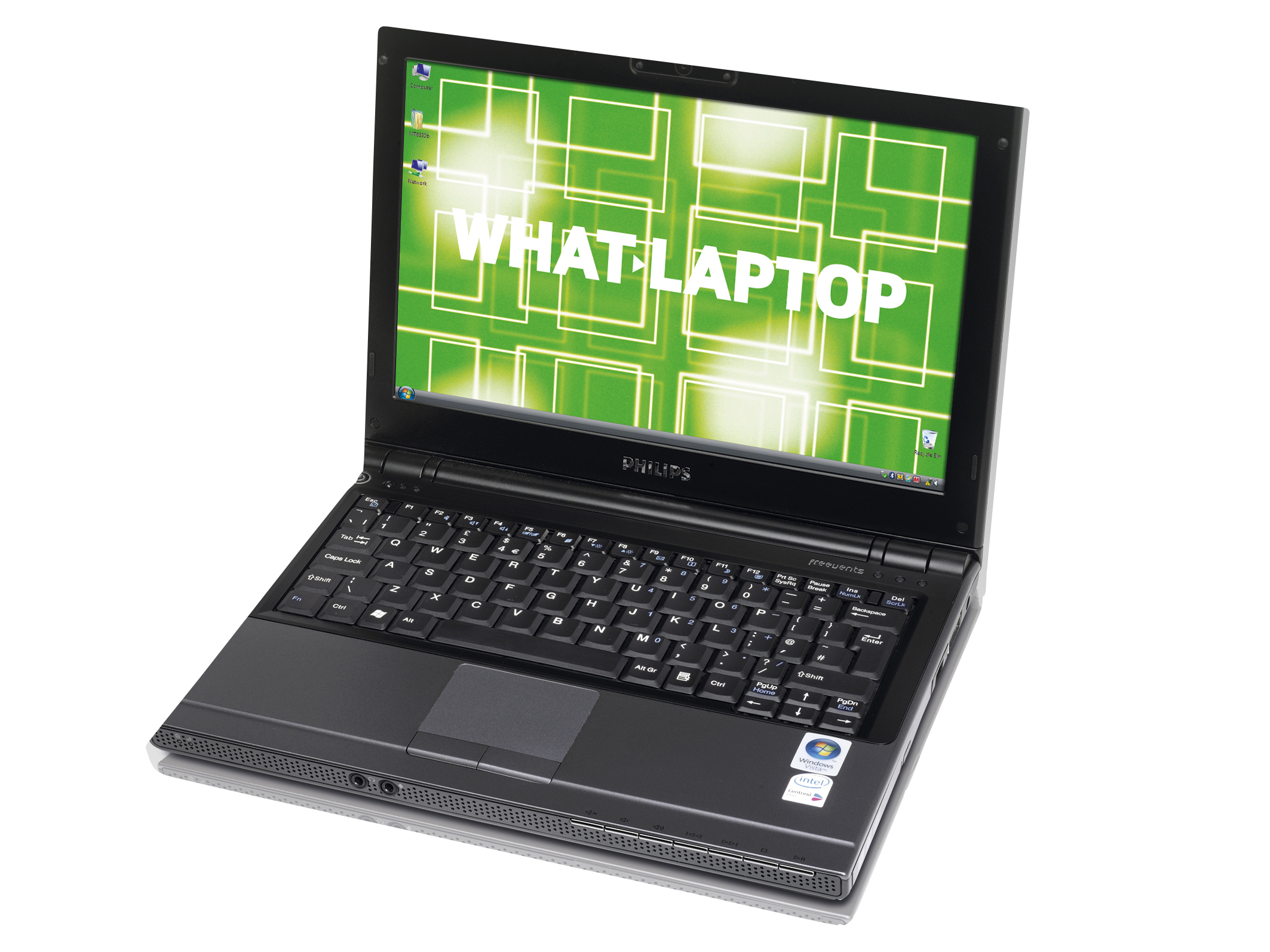TechRadar Verdict
The Philips X200 has some flaws that detract from its performance but they are negligable in light of its features and portability
Pros
- +
Supremely portable
Feature rich
Screen management
Cons
- -
Glossy screen can be irritating
Cramped keyboard
Why you can trust TechRadar
The Philips X200 (£850 inc. VAT) shares the same chassis design as the Holbe Dialogue Flybook VM. However, while this machine is half the price of the VM, it doesn't share the same build quality. The black plastic is solid but it isn't as robust as the VM and, although we liked it, it shows its price.
Weighing in at 2.1kg, this is a lightweight machine that is sold exclusively through PC World. The key selling point is the 12.1-inch Super-TFT panel that isn't fitted to the main body in the conventional way. Instead, you'll find it connected to a central stand, rather like an external TFT monitor, so the screen can be raised and tilted to a more ergonomic and natural position.
The panel is reasonably bright, but we needed to turn the brightness up to full for the best contrast. Pre-installed with Windows Vista Home Premium, this machine has a Windows Experience Index rating of 2, This means it won't run in full Aero mode, largely due to the use of an integrated graphics adapter, in this case the GMA 950. It's more than adequate for running DVDs and standard applications, though.
Powered by an Intel Core Duo U2500 chip, you'll find this is a dual-core offering. However, as it needs to run in a slim case, it's an ultra low voltage chip that runs at a slower bus speed, and only comes with 2MB of Level 2 cache. Even being low voltage, we found the left-hand side of the chassis grew warm to the touch. In performance terms, this system ran reasonably well, largely due to the addition of 1024MB of memory.
We were less impressed with the keyboard, as the keys are rather cramped together. However, they are firmly mounted and, while there is a degree of rattle as you type, you'll quickly become accustomed to its quirks.
It may be small, but it comes with plenty of features. You'll find a 1.3-megapixel webcam, 802.11g and even Bluetooth. With a DVD rewriter and DVI port, both on the right-hand side of the chassis, you can watch DVDs and have them outsourced to a digital screen. Media buttons along the front of the case allow you to run DVDs with ease, but the built-in speakers are less impressive.
Multimedia aspirations
The Philips X200 may have aspirations as a multimedia machine, but its specification and features are too low. Where this machine excels is as a lightweight laptop for the frequent traveller. The glossy coating means you find yourself moving the screen to stop reflections, but this is a small price to pay for such a portable machine.
Sign up for breaking news, reviews, opinion, top tech deals, and more.
Tech.co.uk was the former name of TechRadar.com. Its staff were at the forefront of the digital publishing revolution, and spearheaded the move to bring consumer technology journalism to its natural home – online. Many of the current TechRadar staff started life a Tech.co.uk staff writer, covering everything from the emerging smartphone market to the evolving market of personal computers. Think of it as the building blocks of the TechRadar you love today.
